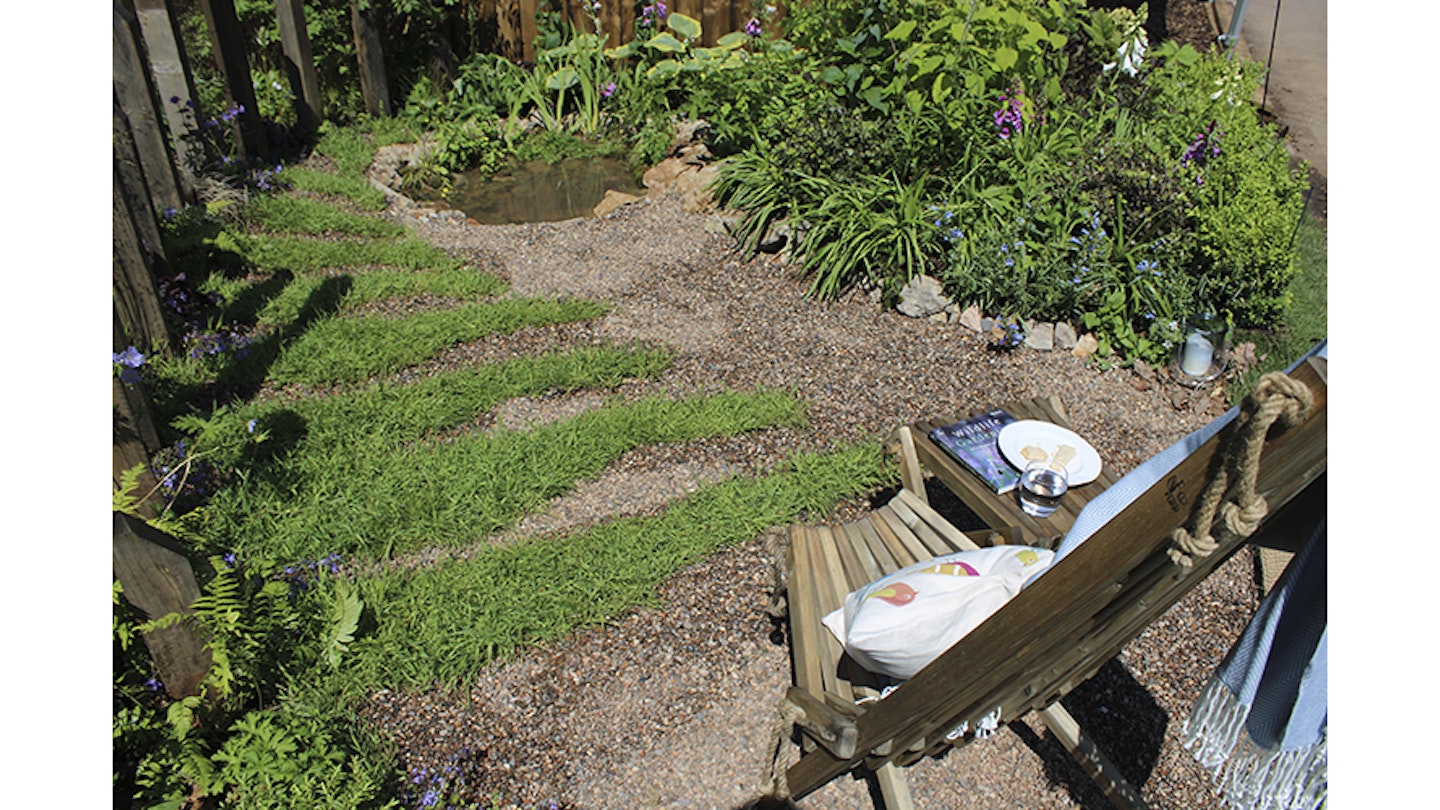The very latest trend in garden ponds is a petite pool for wildlife, and we've got plenty of garden pond ideas that work beautifully in a modern garden. So forget any notions you might have that a pond is too trad or untidy for your garden, or too demanding for you, and have a think where a bijou pool would spruce up your space a treat!
We've seen loads of designer-created wildlife pools at last year's garden shows, with sloping stone or gravel edges so it’s super-easy for creatures to sup, bathe, breed and get in and out. Early spring is the perfect time to get your garden pond sorted, as the ground should have thawed, and it’s an easy and affordable add – by using aquatic plants, there’s no need for a fiddly or expensive pump. So gloves on, spade out, Thermos at the ready… let’s get started.
Garden pond ideas
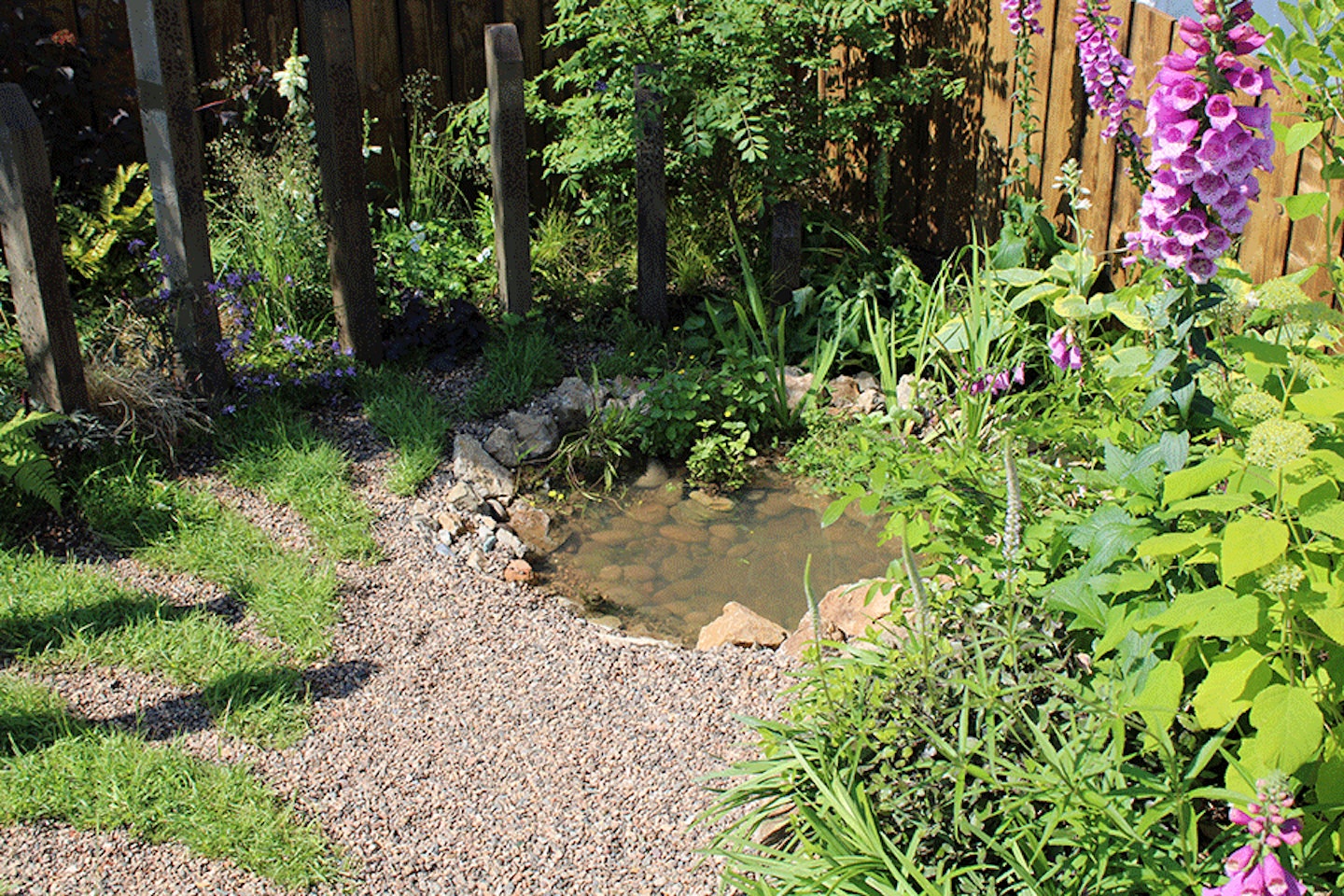
SMALL GARDEN POND IDEA The addition of any water will bring plenty of wildlife to your garden and this petite pool designed by Vicky Lincoln (vickylincolngardendesign.com) proves that small can still be beautiful.
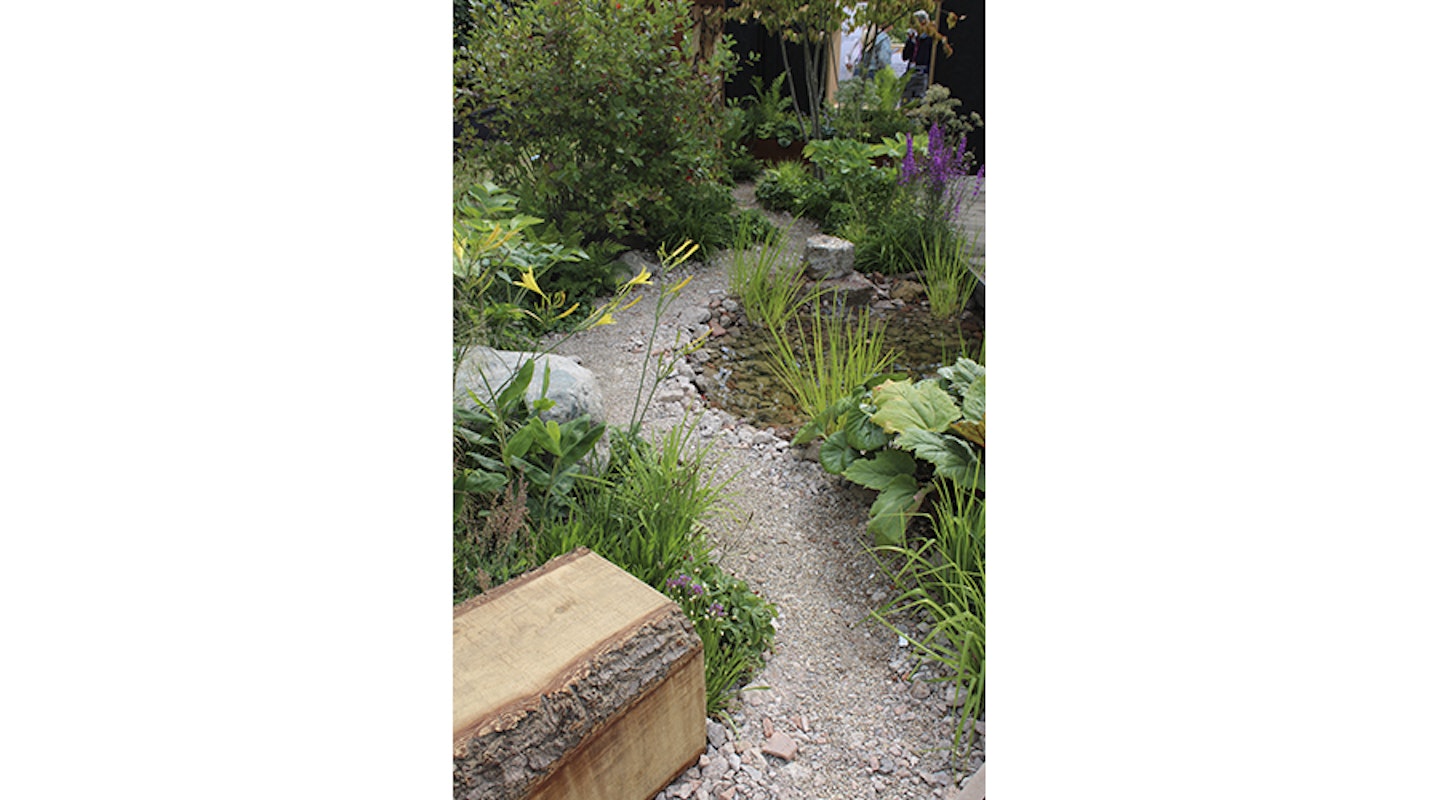
CURVY ADDITION This rounded pond emphasises the shape of the winding path, and is lined with stones. It was part of the RHS Resilient Garden designed by Tom Massey (tommassey.co.uk) at Hampton Court Palace Garden Festival 2023.
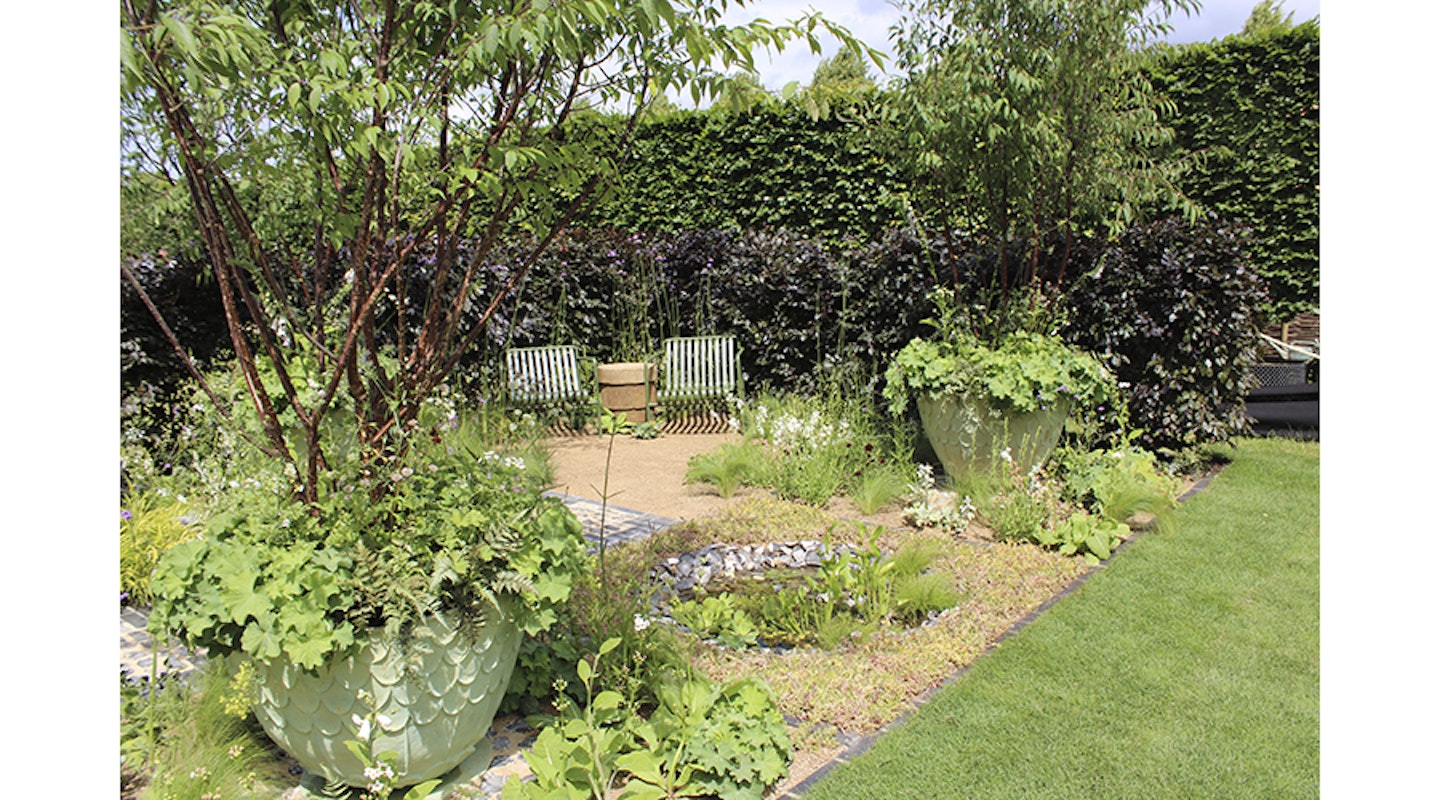
GOOD LOOKER Proving that a wildlife pond can look swish, this circular pool was part of The Traditional Townhouse Garden designed by Lucy Taylor (lucytaylorgardendesign.com) at RHS Hampton Court Palace Garden Festival 2023.

NATURAL GARDEN POND IDEA Designed by Laura Ashton-Phillips (thebotanicblonde.com) at the RHS Malvern Spring Festival 2023, this water feature was made to look like a stream with rounded rocks and pebbles, and shade-loving ferns and grasses.
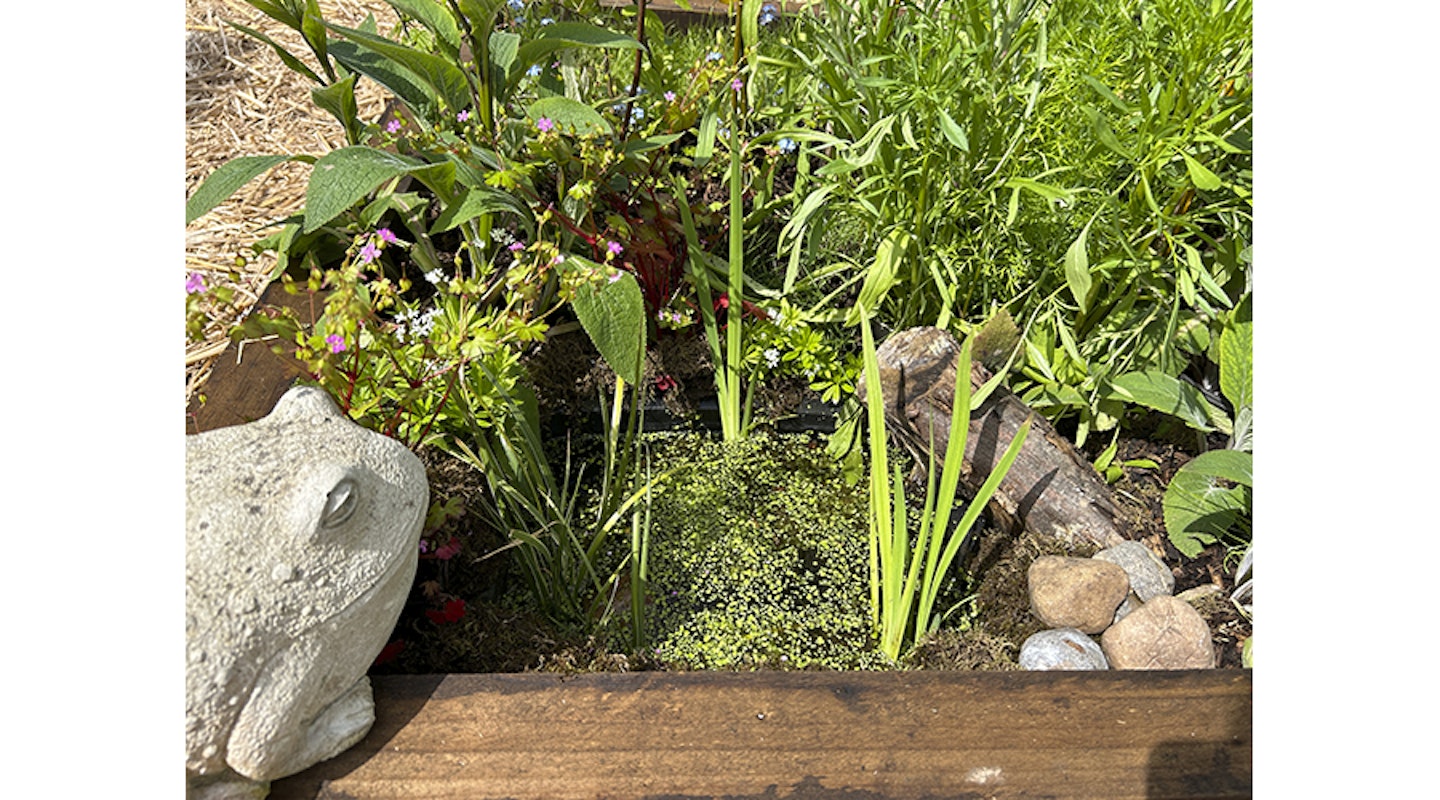
MICRO POND CORNER Love the idea of a pond but don’t have the space to spare? Take inspiration from the best raised ponds. This little lovely, made from a tub sunk into a raised bed. Just be sure to include a ramp so it’s easy for critters to climb in and out.
Where should I put my garden pond
Once you've decided on which garden pond idea to go with, it's time to decide where you're going to put it. Your pond should be in a position where it has some shade and some sunlight for part of the day. The shade will help reduce unwanted algae forming, while the sun will warm up the water making it an ideal spawning ground for amphibians. It doesn’t have to be round – a long or curved pond looks fab. Just don’t position it too close to deciduous shrubs or trees as their leaves will fall into it and rot, creating a layer of sludge that will foul the water.
How big should my garden pond be?
The choice is yours! Any water is better than no water but the bigger it is, the more wildlife it’ll support. However, do ensure it has a minimum depth of 30cm at its deepest point as this will prevent it freezing completely in winter, and also avoid it getting too hot in summer which leads to algae and deoxygenation.
What type of garden pond is best?
You can add a sunken pond with either a preformed mould or a liner fabric:
✽ Preformed mould Usually made from fibre-clay or high-density polypropylene plastic, a pond mould is a rigid shape. If you’re after a deeper pond then this is an easy way to achieve it. There are a wide range of designs to choose from, and plenty less than a metre long. For a wildlife pond, look for one with at least one sloping entry point, or be prepared to create your own with pebbles or a wooden ramp. And do look for durable products with a guarantee, as cheaper products may crack around the edges after a few years.
✽ Liner fabric A flexible liner fabric allows you to create a pond in whatever shape or size you fancy, and you’ll get a more natural finish. It does take a little more work though. The toughest and hardest-wearing liners are rubber-based, with EPDM (ethylene propylene diene monomer) rubber being the favoured choice of garden landscapers. While it’s not the cheapest option, it will last longer than inferior PVC products. Have a look at SealEco EPDM Pond Liner 1mm Thick (from £26.99/m2, bradshawsdirect.co.uk), which has a lifetime guarantee.
How do I install a garden pond?
If you’re going down the mould route for your garden pond idea, position the mould upright in the desired spot and mark around it using rope, a hosepipe or spray paint. Put aside then dig out the soil inside the line, going down as far as the lowest level of the mould, to excavate a mould-shaped hole. This is a trial and error process so you’ll need to keep popping the mould into the hole to check where you need to remove more soil, until it fits snugly. Bear in mind that you’ll be lining the hole with a 5cm layer of sand, so make the hole a bit too big. Use a spirit level placed on top of a plank laid across the mould, to check it’s fairly level all around.
Once you’re happy, compact the soil and line the hole with a 5cm layer of damp sand. Put the mould in place and check again that it’s level all round, as it’s easy to adjust sand levels at this stage. Fill with 10cm of water then backfill any gaps between the soil and the mould with sand. Continue to fill with water, backfilling around with sand as needed, until full and the sand is compacted. Leave for a week to let everything settle.
To cover up the rim, re-lay some of the removed turf, add pebbles or sow seeds of wetland meadow grass that will overhang into the water, such as Meadow Mix for Pond Edges, £3.75/10g, wildflowersuk.com
If you’re using a liner for your garden pond idea, then use a hosepipe or rope to draw the shape of your desired pond on the ground. Once you’re happy, mark it out with spray paint. Dig out the hole, 5cm deeper and wider than you want your finished pool to be. Remove any rocks, roots and sharp bits of debris, then layer all around the hole with 5cm of damp sand. Use extra sand to fashion ridges, steps and mounds and also create a shallow slope along at least part of the edge so that if any wildlife visitors fall in, they can get out easily.
To calculate the amount of liner needed, a good rule of thumb is that you’ll require roughly twice the width and length of the hole to allow for depth and shape, but obviously a shallower pond will need less liner than a deep one. If you’re planning anything more than a basic shape then you’ll find a more detailed calculation at pondlinersonline.co.uk
Next, line the excavated shape with sheets of pond underlay (try PondXpert Pond Liner Underlay Fleece, £29.99/2m x 5m sections, easygardenwatering.co.uk). Unfold the liner over the hole and loosely fit it into shape, smoothing it and tucking in folds as needed and ensuring there’s a good overlap around the edge. Rubber pond liners are heavy so you’ll probably need a helping hand to unfold and position it in place. Or make life easy with a 2-in-1 Swell HDPE Pond Liner With Heavy Duty Underlay, from £53.09/2.5m x 2.5m, swelluk.com
Fill the lined hole with water. Once full, use scissors to trim the liner edges back to about 40cm from the pond edge and weigh them down with rocks or soil. At a later stage you can hide these with plants.
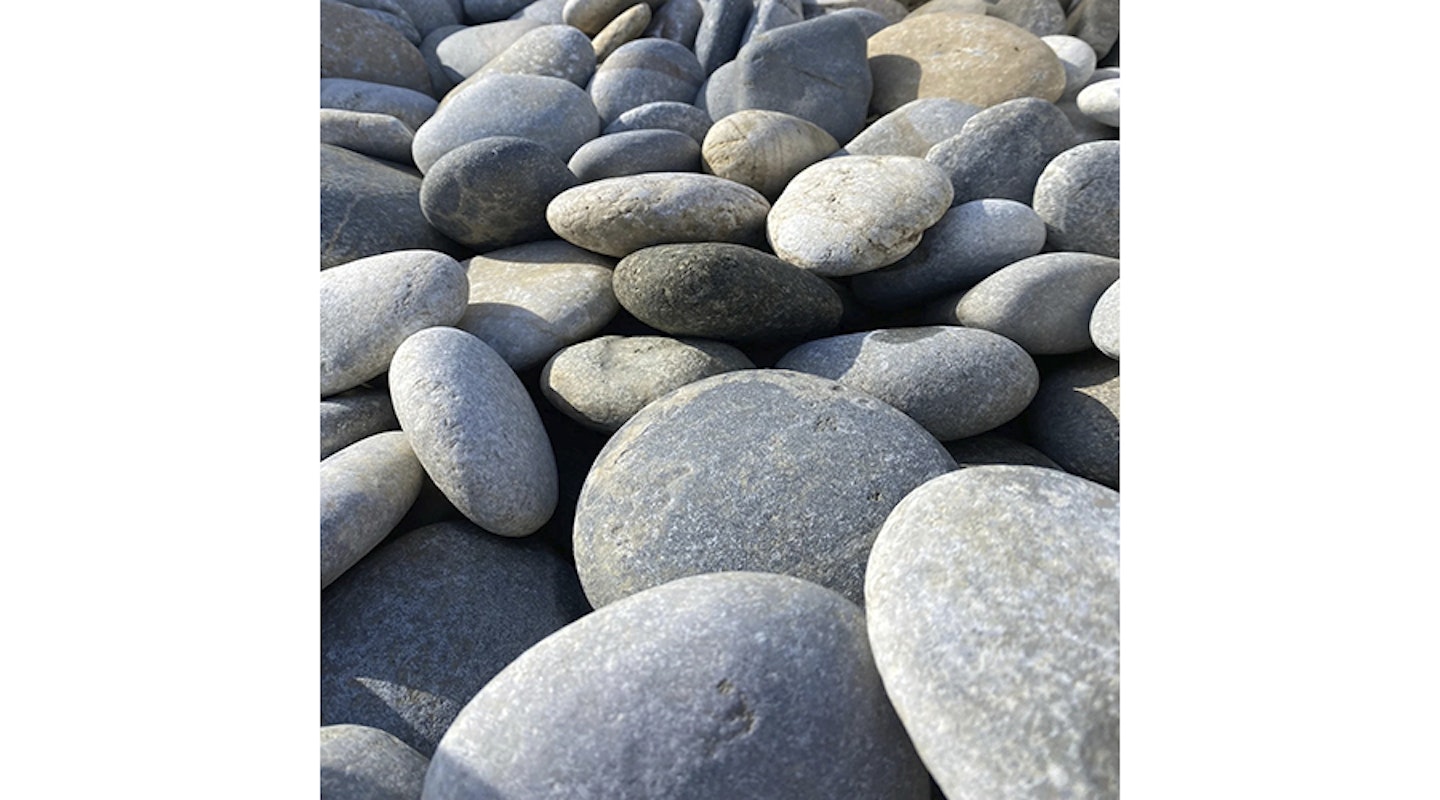
Garden pond FAQs
Is it OK to use tap water in my garden pond?
How do I make my new pond wildlife-friendly?
It’s vital that any wildlife that gets or falls into your pond can escape. The best way to do this is with a shallow slope along at least one edge or, if it’s a small but deep pond, add one or two ramps, depending on the pond size. Pile up a ramp of stones from the bottom to the top to give frogs and toads easy access and exit routes. Propping a large branch or log, weighted down to hold one end below the surface, will be appreciated by birds and insects. And The Hedgehog Pond Ramp, handmade from willow (from £32, StoneWillowCraft on etsy.com) lets hogs climb out after a swim.
Plant up your pond with aquatic plants but also add plenty of plants around your pond. Grasses or shrubs nearby will help creatures get to and from the pool in safety, and providing shelter will mean your pond will be used far more – if there’s a chance they’ll get caught and eaten, prey animals just won’t visit!
TRY THIS GARDEN POND IDEA... Line it with rounded pebbles for a water-worn look. Japanese Flat ‘Greige’ Pebbles, £29.99/10kg stones4gardens.co.uk
Should I top up my pond with water in summer?
Don’t be too quick to top up in dry weather. Your pond is seasonal so will naturally fill up in winter and lower in hot weather, but if the level drastically reduces then add rainwater little and often to reach the desired level. If you’ve only got tap water, use a dechlorinator to remove the damaging chlorine and chloramine.
What’s the best way to remove algae build up?
Too much algae such as blanket weed can choke your pond. Simply pick out the larger bits with your hands and use a net to remove the smaller bits, being careful not to disturb the sediment.
Do I need to prune water plants?
Yes, as ideally half of the pond surface should be free of vegetation. Snip off dying or tatty leaves and flowers so they don’t decompose in the water and thin out any oxygenator plants that have grown too big.
What should I plant in my garden pond?
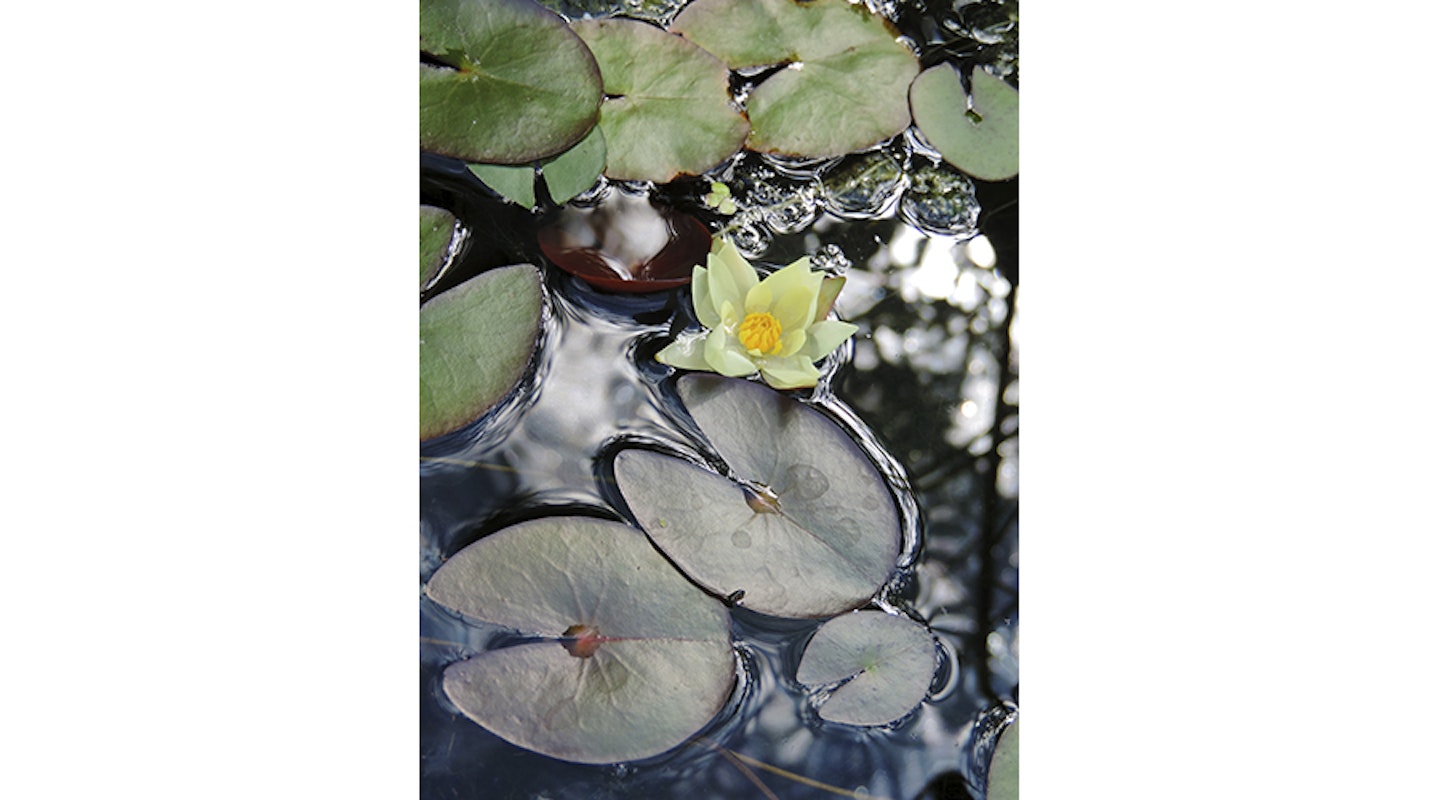
Provide landing pads with a waterlily. Compact ‘Pygmaea Helvola’ (£34.99/1L pot, rhsplants.co.uk) is a good choice for a small pond as it won’t take over.
You’ll need a mix of different types of plants:

✽ Oxygenators live underwater and release streams of oxygen that help to prevent stagnation and also provide cover for aquatic life. Pop hornwort in an aquatic basket, weighted down with stones. Height 10cm Spread 150cm.
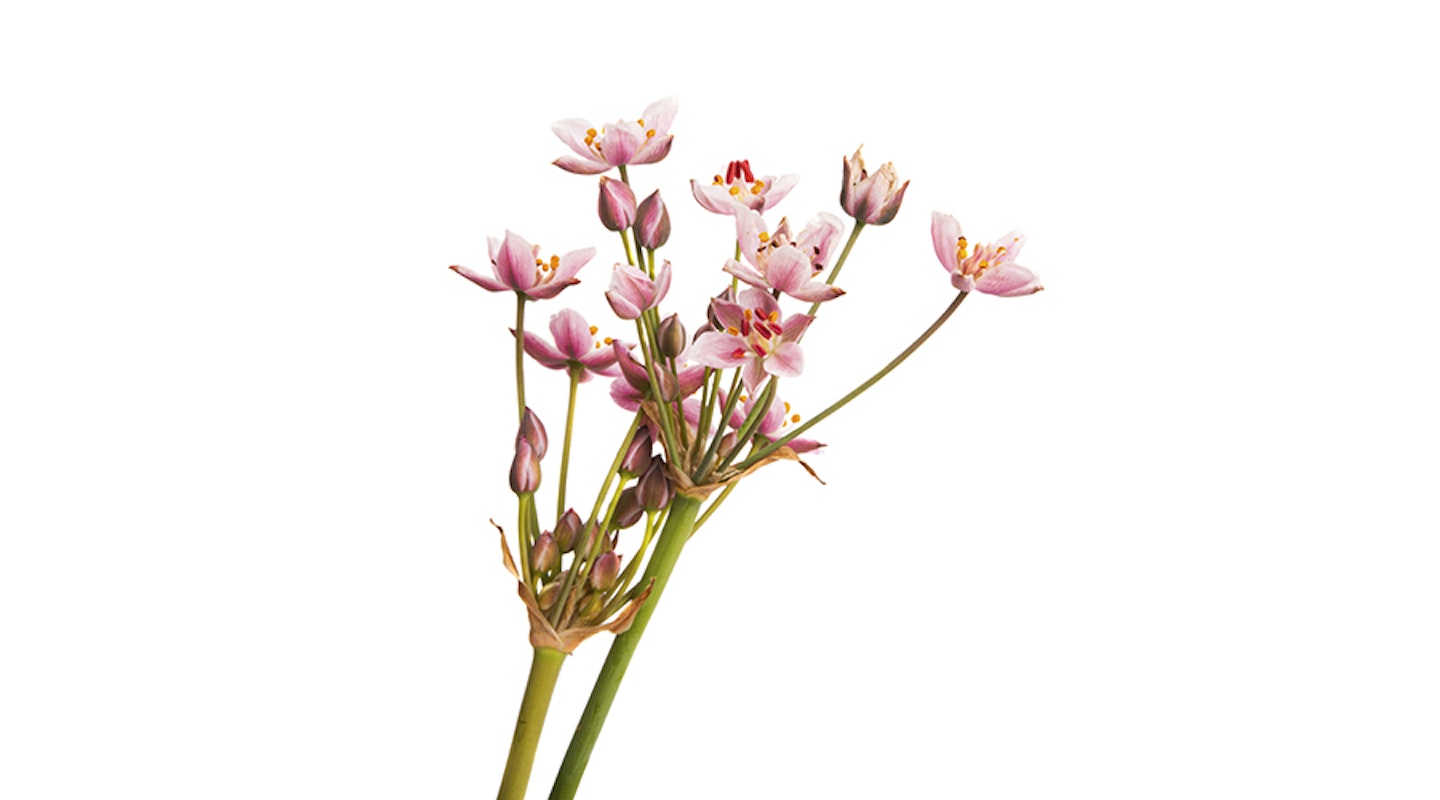
✽ Marginals are planted in very shallow water, with just their roots in water, secured in place with gravel. These help reduce algae, and dragonflies lay eggs on their stems. Flowering rush (Butomus umbellatus) has tall stems capped with pink flowers. Height 150cm Spread 45cm.
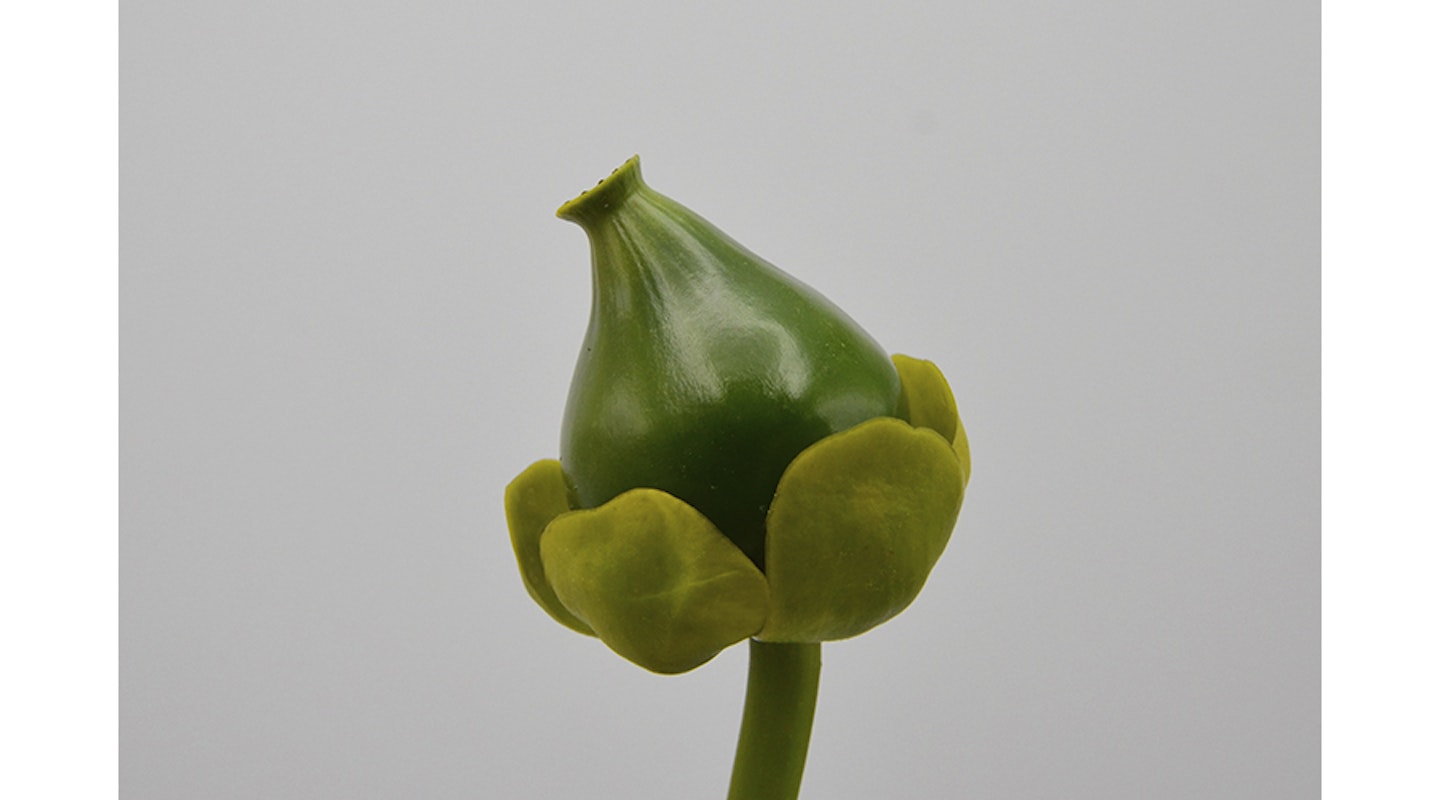
✽ Deep water marginals live in deeper water around pond edges and are needed for dragonfly and damselfly larvae to climb up and emerge as adults. The brandy bottle plant (also known as spadderdock) will love a shady spot. Height & Spread 80-100cm.
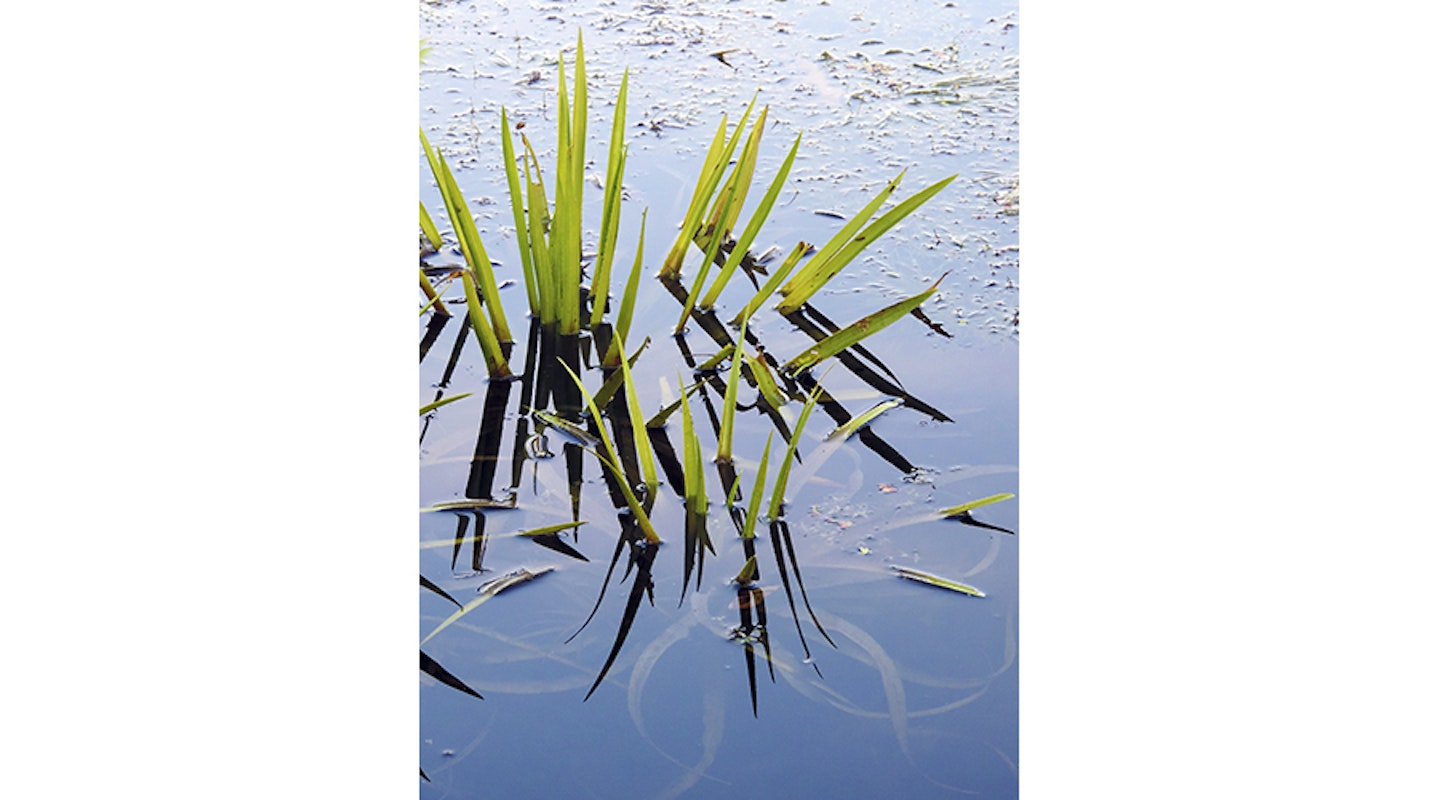
✽ Floating plants provide shade, shelter and breeding places, and help to prevent algae. Most float freely but water soldier (Stratiotes aloides) likes to have its roots in the silt at the pond bottom. Height & Spread 15-30cm.
Most aquatic marginal plants come in an aquatic basket. If not, plant up in a Square Pond Basket (from 69p) filled with an aquatic compost such as Velda, £6.59/10L, both pond-planet.co.uk
Who will visit my garden pond?
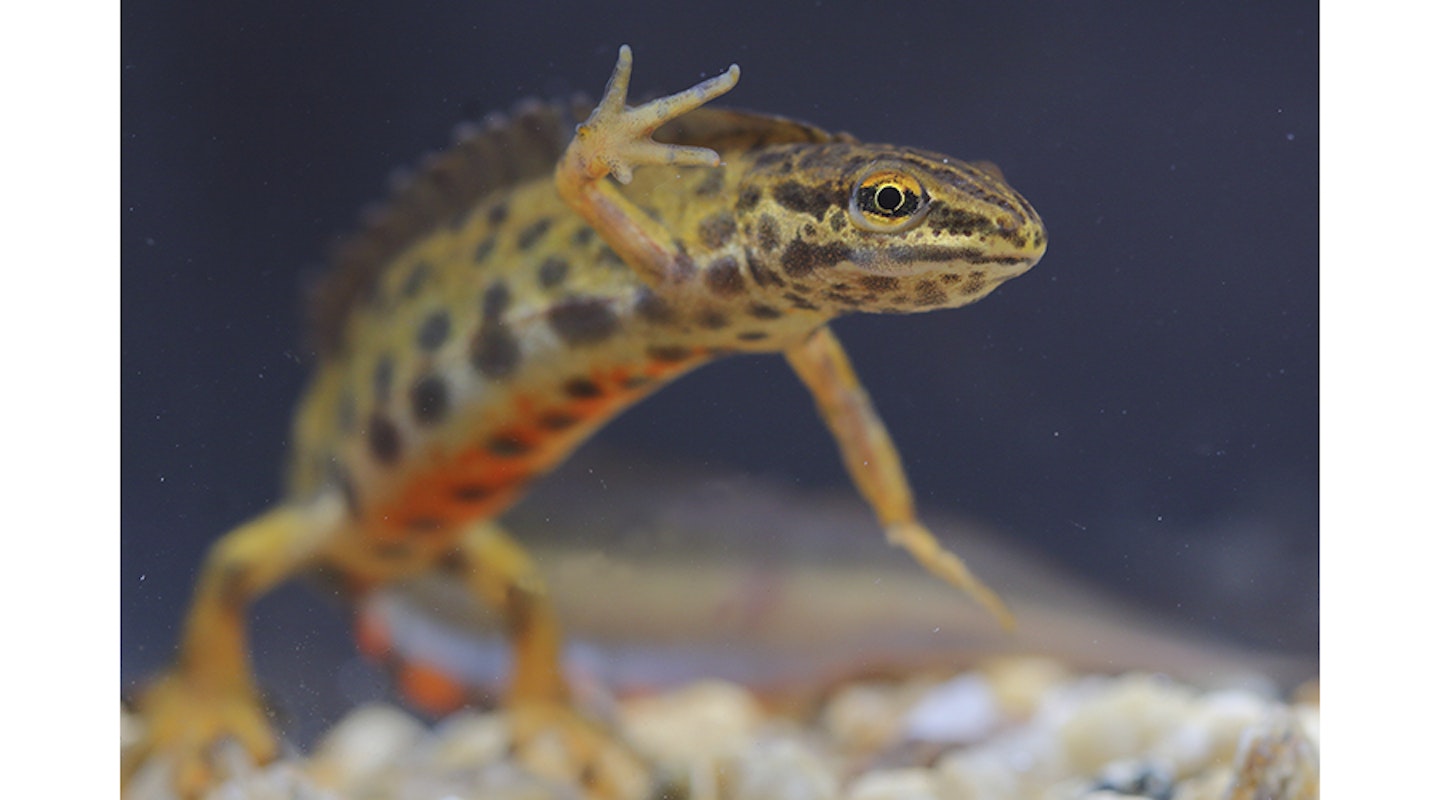
✽ Smooth newt: also known as the common newt, this little stunner can be spotted in spring when it lays its eggs on underwater plant material – for the rest of the year it’ll be feeding on insects, caterpillars and slugs or hibernating in surrounding woody, grassy areas. It’s around 7-10cm long with an orange belly and neat black spots all over.

✽ Common frog: our native frog is likely to be one of your first guests. They like a variety of plants such as frogbit to provide cover and shade for spawn, marginal plants like yellow iris in which froglets can hide, and waterlilies to sit on.
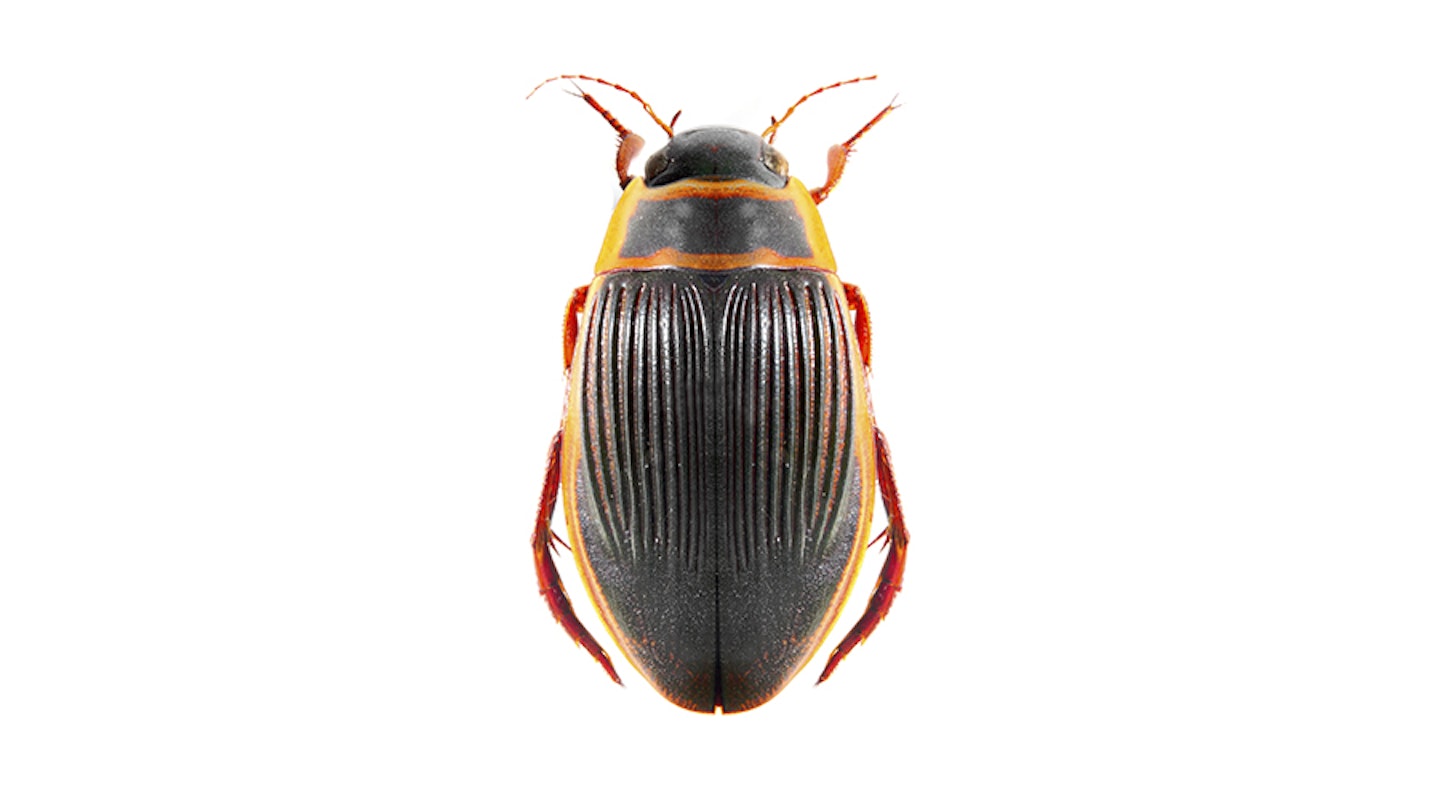
✽ Great diving beetle: easy to spot as they grow up to 3.5cm and have distinctive red legs, they prey on mosquito larvae and keep down tadpole numbers. They’re also scavengers so will feed on algae or dead insects that have fallen in, helping to keep your pond healthy.

✽ Damselfly: along with dragonflies, encourage as many of these voracious eaters as they’ll munch pesky midges, gnats and flies. The azure damselfly measures just over 3cm and has pale blue and black bands along its body. Spot it from May to September.
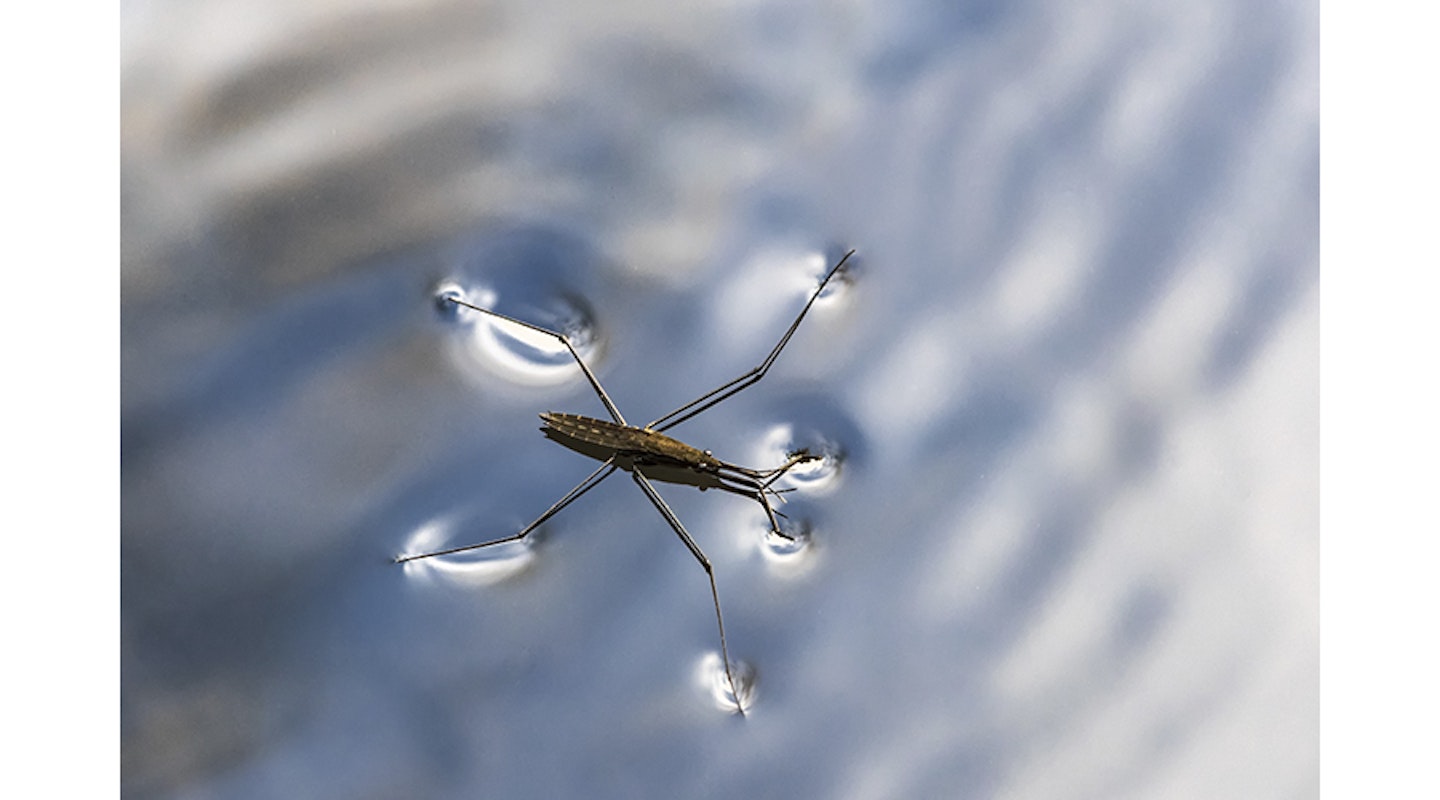
✽ Pond skater: there are around nine common species of these bugs that eat dead or trapped little pond critters. Water-repellent hairs on the bottom of their feet enable them to walk ridiculously quickly on the pond’s surface film.
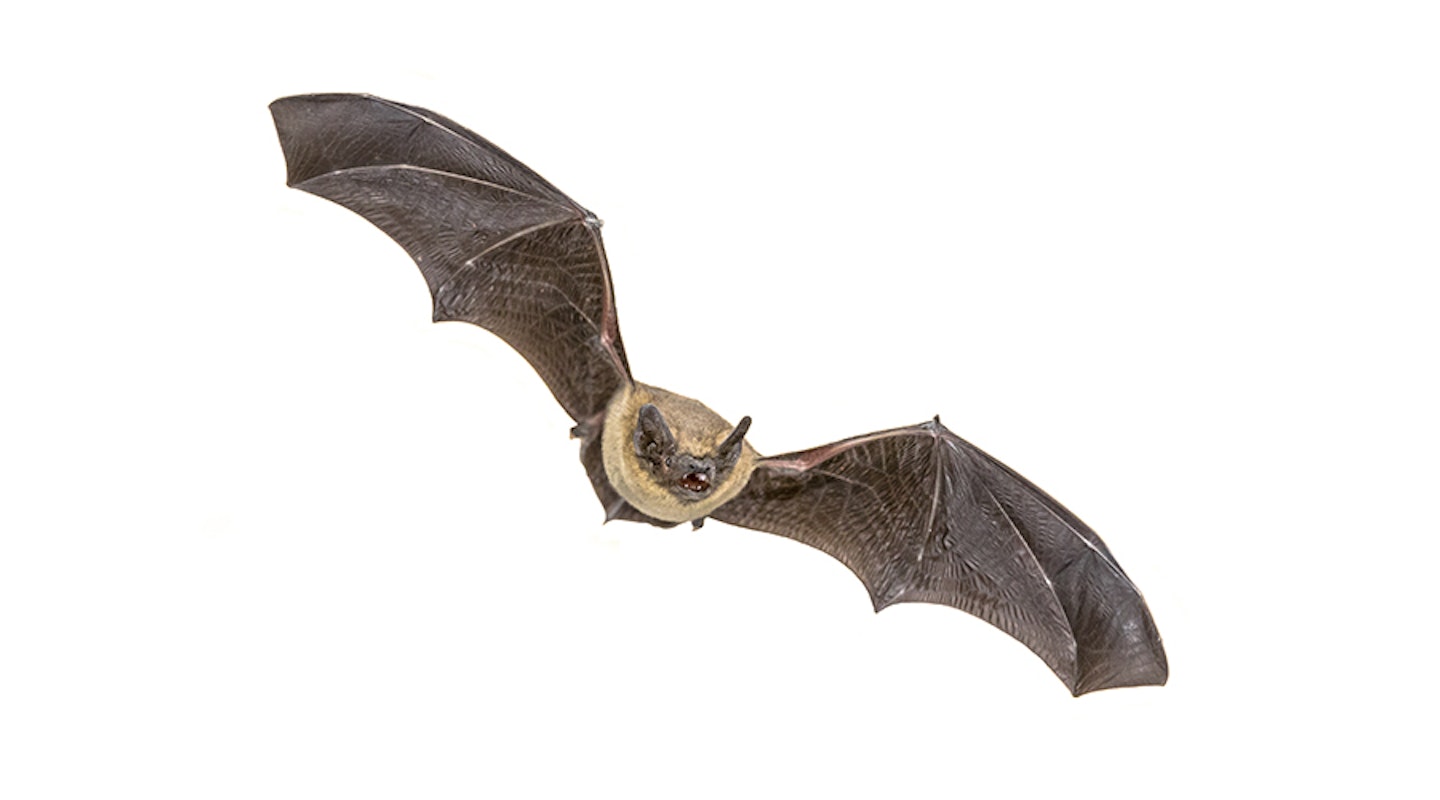
✽ Pipistrelle bat: our smallest and most common bat can eat up to 3,000 aquatic fly larvae, including mozzies and midges, in one night! Weighing less than a pound coin, they come out of hibernation in April but you might spot one before on a warm night.
PHOTOS: EMMA KENDELL, SHUTTERSTOCK
What to read next
Subscribe to Modern Gardens magazine and get the most out of your outdoor space. Discover everything you need to know to make your outside space look fantastic, quickly and easily, with hundreds of simple ideas, designer tricks, affordable products and expert advice in every issue of Modern Gardens. View our latest subscription offers to save on shop prices.
Jules Barton-Breck is a freelance journalist and she writes an eclectic mix of features every month for Modern Gardens magazine, of which she is a former editor.
